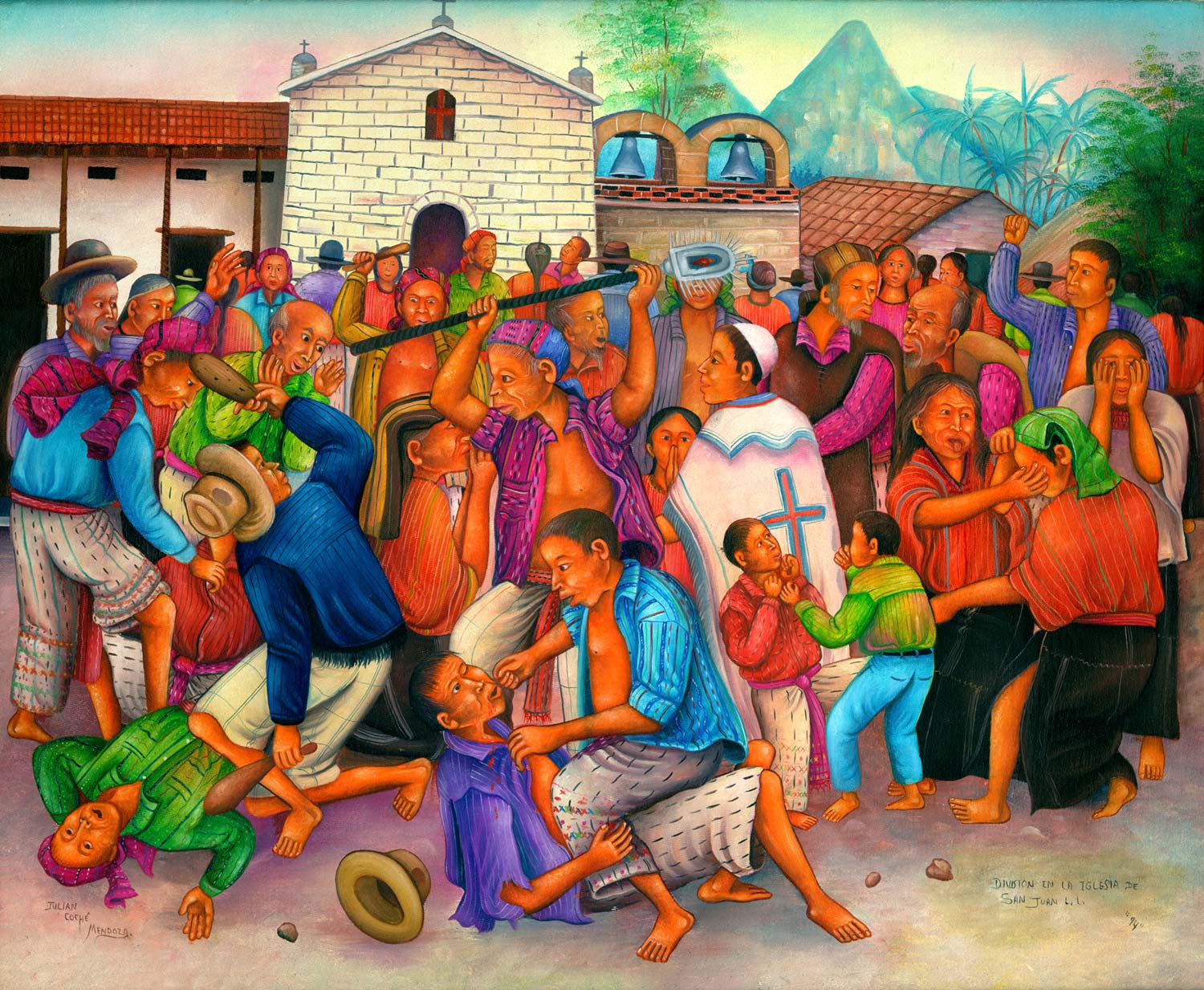Maya communities, mainly small and isolated ones, often have their own resident priest. San Pedro la Laguna had its own priest, who also administered other towns under its jurisdiction such as San Juan la Laguna. This smaller town is a twenty-minute walk from San Pedro.
John Vesey, an Irish-American priest from Brooklyn, New York, arrived in San Pedro la Laguna after having served in Santiago Atitlán. There, his style of “evangelism” was not welcome, as it was considered very controversial and radical in relation to the customs and traditions of the community. Vesey was almost alone in believing that the Maya parishioners of Santiago Atitlán sympathized with the guerrillas. He thought they were responsible for the 1981 murder of the priest Stanley Rother, a priest who was beloved by the entire community. Vesey did not like the religious brotherhoods, or cofradías, which he considered pagan. He believed they conflicted with Catholic Action, a group of lay Catholics—the right arm of the Catholic Church—who influence Maya society. Vesey’s “evangelical” style was inappropriate for dealing with Indigenous people.1
Vesey was a better fit as an interim priest in San Pedro, because there the cofradías had been eliminated in the 1970s. However, the people of San Juan did not want to give up their cofradías nor their cult of Maximón. Vesey felt that both practices were pagan. His approach was confrontational, rather than conciliatory. Victor Perrera, a Guatemala-born American writer and journalist, relates that: “Pedro Cholotio Iquic, an earnest, articulate catechist who heads San Juan’s Acción Católica delegation, was most incensed at Father Vesey’s demeaning attitude toward catechists and cofrades. He had refused to perform the Eucharist for them, claiming they were unworthy and calling them ‘imbeciles,’ ‘stupid little Indians,’ and ‘puppets’.”2 Vesey ended up closing the church in San Juan. In 1987, tensions between Vesey, the cofradías, and Catholic Action erupted into the violence depicted in Julián’s painting.
Perrera affirms: “El Grafico’s editorial of November 9 attributed the scandal to a clash between cultures, depicting it as a foreign priest failing to understand the “magic-religious” traditions of the indigenous communities.”3 Vesey was eventually transferred to another part of Guatemala.4 Since then, the church building in San Juan has been rebuilt with a much larger sanctuary, preserving only the old façade, the one shown in Julián Coche’s painting.
Division in the Church is Julián Coche’s most significant painting before entering art school in Guatemala City. For a teenager who seldom said more than a few words, it is an impressive theme. Julián had witnessed this confrontation with Father Vesey, who appears here dressed in white. During the annual festival of San Juan, Julián exhibited this painting with others by San Juan artists, but it caused a controversy and Julián was forced to take it down.
- Perera, Victor. Unfinished Conquest. Berkeley and Los Angeles: University of California Press, 1993.
- Ibid.
- Ibid.
- Ibid.


